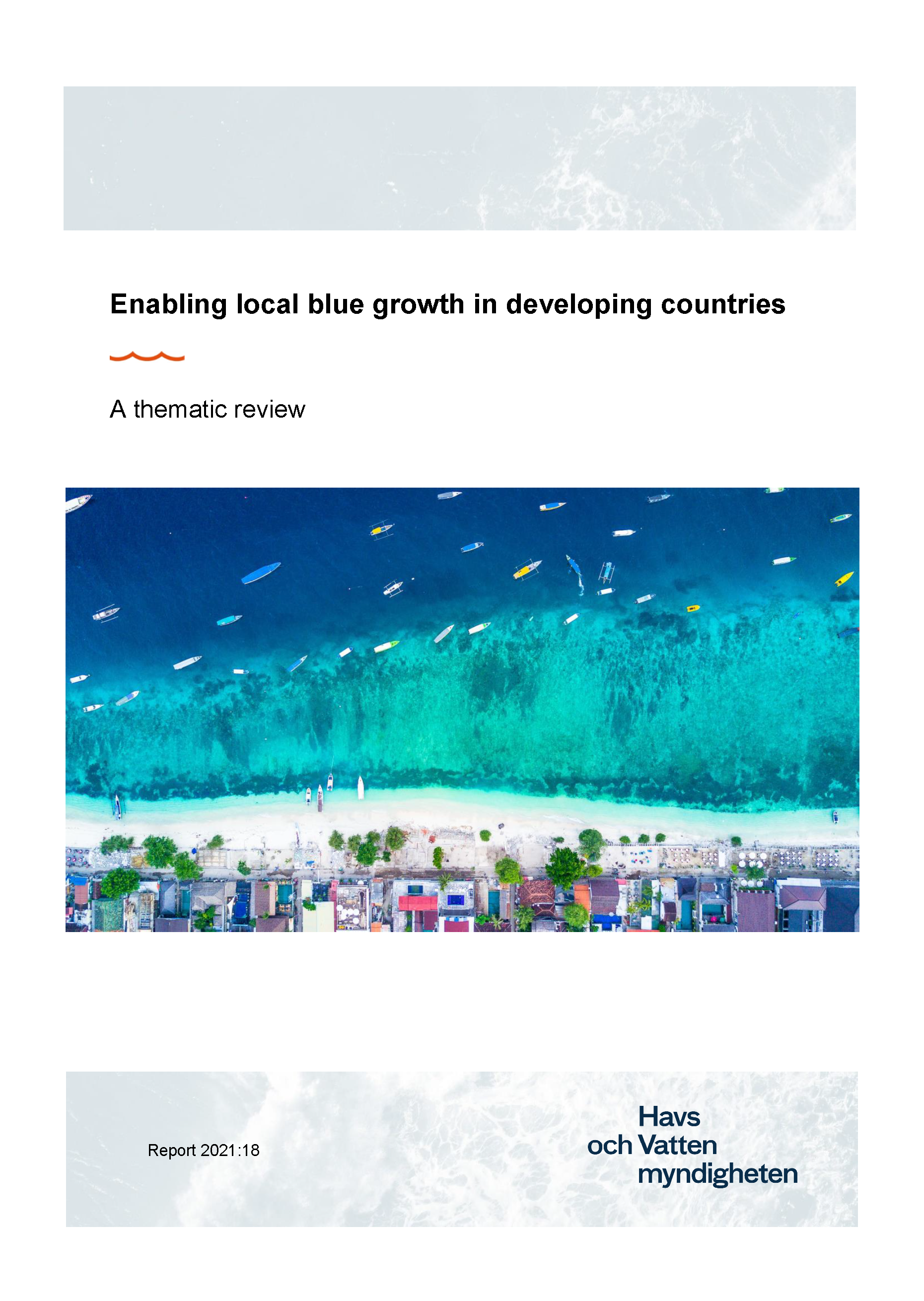Enabling local blue growth in developing countries
This report is a result of SwAM Ocean, an international development cooperation programme being operated by the Swedish Agency for Marine and Water Management (SwAM). SwAM Ocean aims to contribute to poverty reduction through sustainable use of aquatic resources.
Summary
This study is a thematic review of scientific literature identifying prerequisites and factors enabling local blue growth in developing countries. Sectors in focus are fisheries, aquaculture, tourism and conservation.
The review include 90 scientific articles and involves systematic mapping, regression analysis and content analysis.
Value chains and social development matters
Results show that rising incomes and improved socio-economic wellbeing in coastal communities largely depend on the existence of well-functioning value chains and the communities’ degree of social development. It also finds, maybe unsurprisingly, that sustainability of marine and coastal resources are associated with quality of resource management, coherence of policy and legal frameworks as well as the manner in which they are communicated.
Furthermore, inadequate resource management and incoherent policies and laws are associated with lower incomes, wealth and employment, this study finds.
Governance that enable local blue growth
A number of critical factors explaining what type and quality of governance that work as enablers are also identified:
- governance frameworks that are coherent and reliable
- leadership that is dynamic and legitimate
- administration that is reliable
- enforcement that is efficient all enable local blue growth according to results
But it doesn’t stop there.
Communities need a say
Communities need to be given adequate opportunity to influence decisions. Because a number of cases show how policies and environmental regulations and other decisions affecting the livelihoods of coastal communities need to be adapted to local circumstances.
Coastal-community development also depends on the degree of social cohesion and equity in access to resources, as well as on capacity of individuals and organisations in both private and public sector.
Another conclusion is that local blue growth benefits from the existence of well-functioning value chains, markets that are open and accessible, and infrastructure that is adequate and well maintained.
8 recommendations to get local blue growth
Based on the results, this study proposes eight recommendations for consideration by authorities and development agents working for local blue growth:
- Ensure that legal frameworks and policies affecting the blue economy are coherent, clear and predictable.
- Support the development of well-functioning value chains for blue economy products and services.
- Support the creation and development of organisations for blue growth in the local community.
- Appreciate the importance of high-quality leadership.
- Engage local communities in decisions affecting their blue economy.
- Enhance the capacity and technical skills of individuals and institutions of the blue economy.
- Provide and maintain the infrastructure necessary for local blue growth.
- Build local blue growth using the whole toolbox – the above recommendations for advancement of local blue growth should not be viewed in isolation but addressed simultaneously.
This report is a result of SwAM Ocean, an international development cooperation programme being operated by the Swedish Agency for Marine and Water Management. SwAM Ocean aims to contribute to poverty reduction through sustainable use of aquatic resources.




